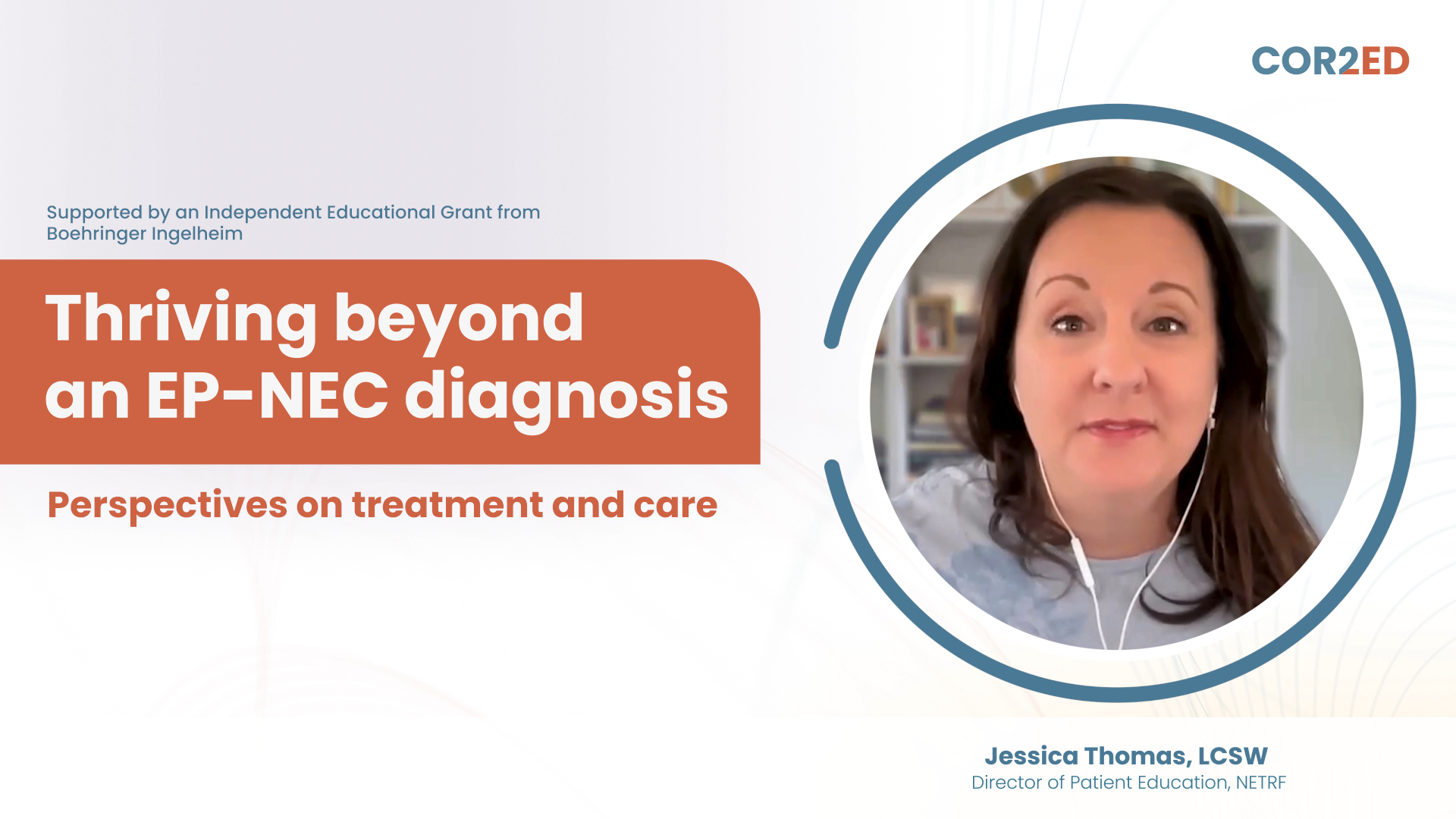Hello, I am Santiago Escrivá. I am a medical oncologist. I work in Vall d’Hebron, Barcelona. And I am going to comment about three abstracts that have been recently presented at San Antonio Breast Cancer Symposium.
The first abstract was the monarchE trial that was presented by Dr. Johnston. We know that patients with early breast cancer, hormone-receptor positive, HER2 negative, high-risk lymph node positive patients are a higher risk of relapse despite the use of endocrine treatment. And that CDK4/6 inhibitors have performed very well in the metastatic setting. The aim of the trial was to test the hypothesis that adding two years of abemaciclib to the standard endocrine treatment would improve invasive disease-free survival and distant relapse-free survival of these patients.
The aim of the presentation was to update on previous results and report the first overall survival interim analysis. Regarding the primary endpoint, the curves are separating even more than previously reported, with a benefit of around 40% in the risk reduction of IDFS and distant relapse-free survival as well as an absolute benefit of around 6%. Regarding OS, it was not statistically significant at this point, possibly due to immature results, but there were significantly fewer deaths and distant metastases in the abemaciclib arm. I think these results support the use of abemaciclib in the adjuvant setting in this lymph node high risk population of hormone receptor positive, HER2 negative patients.
The second abstract I would like to talk about is the TRIO-US B-12 TALENT trial. We know that patients with high risk luminal patients in the early setting are usually treated with neoadjuvant chemotherapy based in anthracyclines and taxanes. Results regarding PCR are usually poor, of less than 10% and toxicity is also a concern. The aim of this trial is to test the hypothesis that HER2-low patients in the early setting will perform better with T-DXd. There were 58 patients included that were randomised to T-DXd or T-DXd plus anastrozole. The primary endpoint was PCR. Patients had clinical responses of around 68% in the T-DXd arm and 58% in the T-DXd plus anastrozole arm.
Regarding PCR, there was one reported in the T-DXd arm, but not all patients had undergone surgery at the time of analysis. I think that these results are relevant because it’s the first time that ADCs are being used in this early setting population. And I think that we are going to see more and that in the end these ADCs are going to be routinely used and maybe they might substitute chemotherapy.
The third abstract I would like to talk about is the SERENA-2 trial that was presented by Dr. Oliveira. We know that luminal patients in the metastatic setting after the first line endocrine treatment may have poor results in subsequent lines of therapy. So new therapies are needed. Camizestrant, it's a next generation oral SERD, a selected oestrogen receptor degrader. The aim of this trial was to compare different doses of camizestrant to
fulvestrant, which is the current standard of care.The trial was positive in regarding the primary end point, PFS, with an improvement for both 75 and 150 milligrams doses of camizestrant tested. There was an improvement of around 40% in the risk reduction of PFS and an improvement of around four months compared to fulvestrant.
There were planned groups of interest, patients that have received previous CDK4/6 inhibitors that accounted for around 50% of the population, included in the trial, patients with lung and liver metastases, ESR1 mutations, and also endocrine driven disease that derived significant and clinically meaningful benefit from camizestrant. Toxicity was manageable, being the most common adverse events photopsia and bradycardia. These interesting results are being confirmed in phase three trials. And probably camizestrant will be a very interesting option for this population of patients that have relapsed to a first line of endocrine treatment based in CDK4/6 inhibitors.
I would like to thank you very much for your attention.


 Downloadable
Downloadable  6 MIN
6 MIN
 Dec 2025
Dec 2025 








